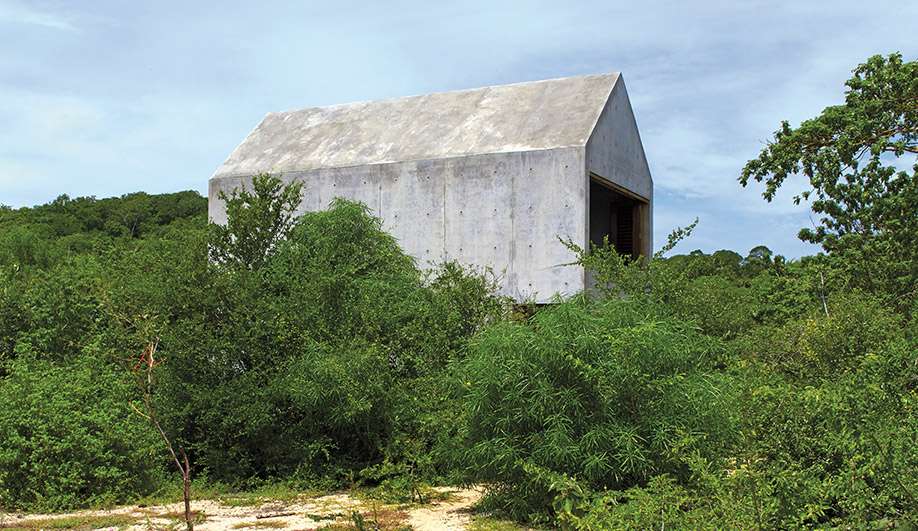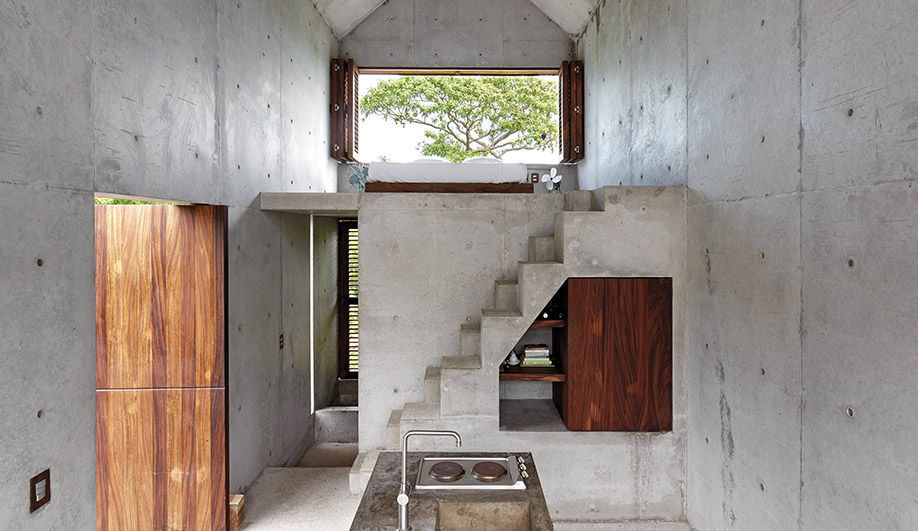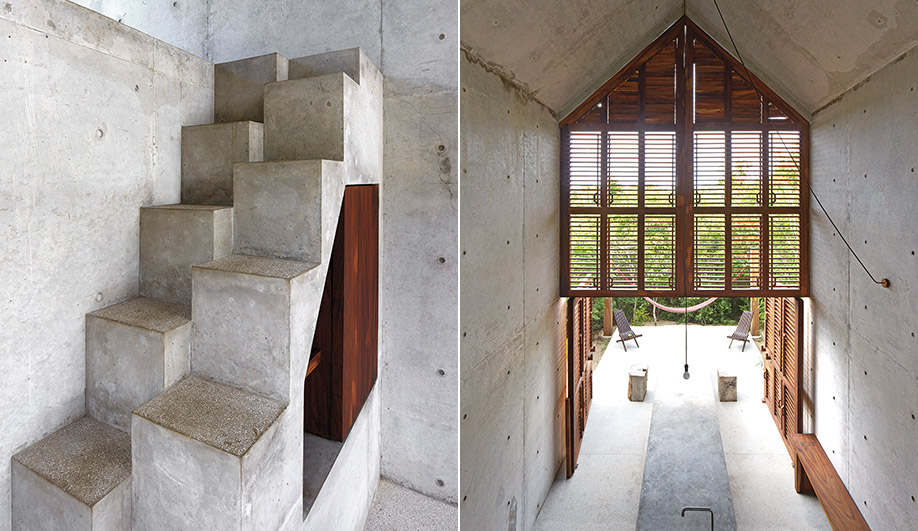
For her first completed project, Aranza de Ariño, a 27-year-old Mexican architect, has created a single-room vacation house surrounded by hills and surf.
With a footprint of just 26 square metres, Casa Tiny may be small, but it comes with a big attitude. Its designer is 27-year-old de Ariño, who has dubbed her first completed project “A Walden for Two” in a poetic nod to the simple living endorsed by literary hero Henry David Thoreau, who famously built himself a cabin on a wooded lot near Walden Pond. Set some distance off the main road along Mexico’s Oaxacan coast, de Ariño’s guest house is hidden, like Thoreau’s cabin, amidst dense vegetation; even its gabled roof recalls the American writer’s modest getaway.
Casa Tiny is reached via a winding footpath and entered by a side door opposite a small dipping pool. The house offers stunning views of the hills in the distance, and while the ocean is not visible, it is close enough to be heard.
Sturdily built from all-in-one, cast-in-situ concrete, it is not your average beach shack. De Ariño earned the commission while still a student. In fact, she still is a student, now embarking on a master’s degree in urban studies at the Harvard Graduate School of Design. The owner of the house, Claudio Sodi, is the younger brother of artist Bosco Sodi, who founded the nearby Casa Wabi Foundation, a multidisciplinary art centre designed by Japanese architect Tadao Ando. Since opening in 2014, Ando’s masterful structure has helped put the surf town of Puerto Escondido on the map as an exotic cultural destination.

If Casa Wabi were an oyster, then Casa Tiny would be its pearl. Ando’s concrete building, topped with a gigantic palapa roof, is impressive in its monumental scale; de Ariño’s project is arguably just as bold, yet it consumes only a fraction of the amount of concrete. Its modest scale and off-the-grid rawness demand that you drop your gadgets and reconnect with what’s around you: nature.
“All activities at Casa Tiny are in direct relationship with the stillness of the place,” says de Ariño. The concrete kitchen island that extends into a dining table, for instance, is the focal point of the interior; its 5.4-metre length extends past the exterior wall into the sunshine, offering an inviting spot for meals and gatherings that last well into the night. The only additional feature of the house, which is oriented along a north-south axis to catch dominant winds, is wooden shutters, placed on all the windows.

The dipping pool wraps around to the west, with a large tree next to the house acting as the anchor between the two. No space is wasted inside. While the mezzanine is open to the main double-height room, the shower and toilet are hidden behind a concrete wall and the only storage space is an embedded shelf. Paddle steps jog their way up to a loft that has room for a bed and not much else.

While Casa Tiny has its obvious charms, it is not a vacation home without the need for upkeep. The parota wood features may soften the brutal quality of the exposed concrete, but sand still blows in through the glass-free windows, and creepy crawlies inevitably find their way inside. If the isolation becomes too much, visitors can escape to the Hotel Escondido, located a short walk along the beach. And, if the sky is clear and you don’t mind meeting a snake or scorpion on your way, the stroll back to the bijou guest house is likely to be one of the most romantic in your life.
